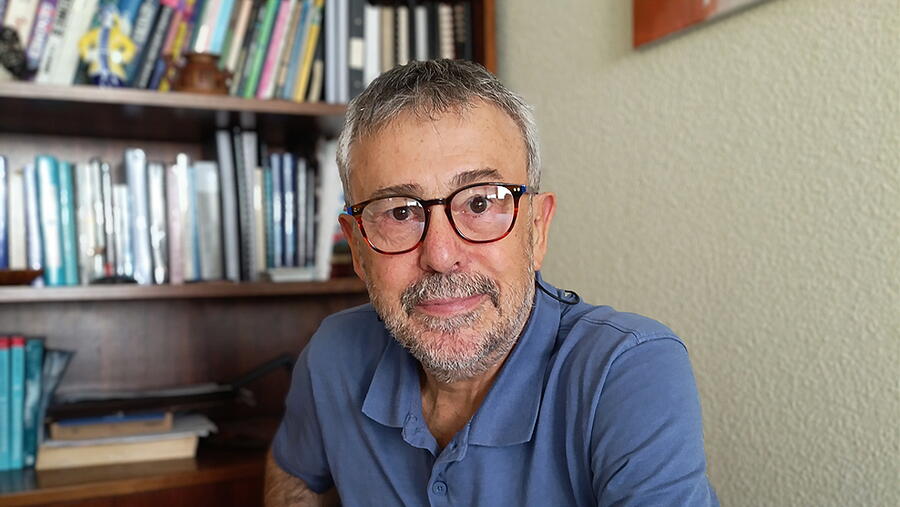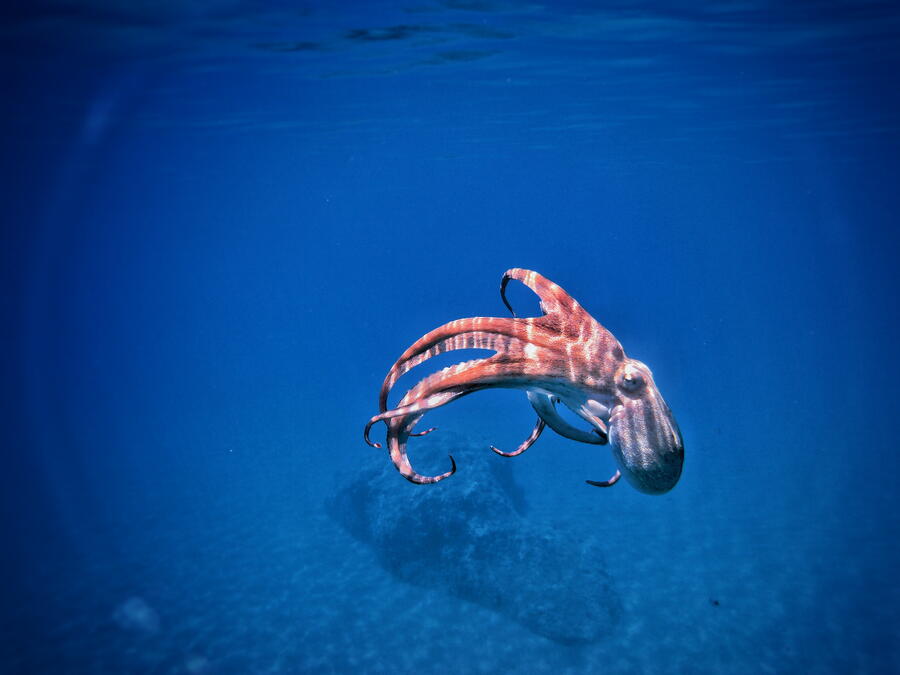Paulino Martínez: «Aquaculture is the production of the future»

According to the latest human population projection by the UN, by 2050, there will be around 10 billion people living on the planet, 2 billion more than today.
This figure is much easier to understand when accompanied by another: to meet future food demand, this population increase will require a 70% increase in annual food production compared to current levels. This is undoubtedly an unprecedented global challenge.
In this context, aquaculture is emerging as one of the most promising solutions to meet the food challenge, combining key concepts such as sustainability, innovation, and production efficiency.
This week, World Aquaculture Day is being celebrated. And there is no better way to commemorate this date than to talk to Paulino Martínez Portela, one of the most established voices on the international scene in genetics applied to aquaculture and resource conservation.
Professor of Genetics at the Faculty of Veterinary Science at Campus Terra and coordinator of the Acuigen research group, Paulino Martínez, talks to us today about the role that aquaculture can play in the fight against hunger, the evolution of the aquaculture sector in the coming years and the importance he attaches to the transfer of knowledge to companies and administrations.
-Aquaculture is related to many, if not all, of the SDGs (Sustainable Development Goals): eradicating hunger and improving health, increasing the environmental sustainability of the oceans... Is society really aware of the extent of its importance?
-What I perceive as a direct consumer of fish and shellfish is that, compared to a few years ago, people are buying much more farmed fish. Before, people always said, ‘No, I want fresh fish,’ or ‘Farmed fish is of poor quality.’ So, what I see now is a transformation, at least in terms of purchasing.
I think the general public's perception at the moment is influenced by the impression that they are buying a quality product at a significantly more affordable price.
Regarding the SDGs, the feed-to-meat conversion rate in aquaculture is one of the most efficient, making it a highly sustainable production in all aspects. It is also worth noting that the need for water is minimal when compared, for example, to the production of beef.
Without a doubt, from today's perspective, aquaculture is the production of the future. It produces a very good product: healthy, safe and very competitively priced. Added to this is the situation faced by many fishing grounds, which have been ravaged by overfishing.
Another interesting point is the number of species farmed in aquaculture: we are talking about 500 worldwide, compared to 4 or 5 breeds of cattle or pigs.
We are at a very interesting stage, given the enormous diversity of species with great potential to be produced according to different levels of demand and technological use.
-The Acuigen group, to which you belong, is a leader in genetics applied to aquaculture. What are your main lines of research at present?
-We have two lines of research linked to aquaculture: one has to do with fisheries management and sustainability, while the other is related to improving production in farming.
We are leaders in flatfish, including turbot and sole, but we also work with a variety of other species in the Mediterranean, such as sea bream and sea bass. In fact, the main companies in the Mediterranean work with us, and we are also working with teams from Central America.
In other words, we are very open to all fields of research within aquaculture, as well as with molluscs, given that there has recently been considerable concern about molluscs in Galicia due to the havoc caused by certain diseases. Examples include the cockle, which has practically disappeared due to Marteilia, and the flat oyster, which has disappeared due to Bonamia.
So, what we basically do at Acuigen is apply genetic and genomic tools to respond to the problems raised by both fish and mollusc producers, as well as the Galician Regional Government itself. Similarly, we have been coordinating a committee for genomic resources in aquaculture at the global level with the FAO, among other things.
-The octopus is an undisputed icon of Galicia on a cultural and social level, etc. Will we ever see the octopus as a species with aquaculture potential?
-I have my doubts. Work has been ongoing with octopus for a few years now, but there have been no tangible results to date. It is true that three or four years ago, two research groups managed to initiate the larval phase, for example, and some companies are now applying this approach.
However, the octopus has an additional problem in relation to aquaculture, as it is considered a highly intelligent animal, and there is controversy surrounding the amount of stress it can experience when confined in breeding tanks.
I believe there is still a long way to go before we can maintain sustainable and commercially viable production.

-Projects such as Resalber are investigating the resistance of cockles to salinity. What scientific challenges does this type of research pose?
-At Resalber, we are evaluating salinity tolerance because, in the context of climate change we are currently experiencing, torrential rains in spring or winter cause a drastic drop in salinity at the bottom of the estuaries, which is where large beds of molluscs are found. This phenomenon causes mass mortality.
Specifically, we are working with cockles in Galicia, as well as with Japanese clams in a European-level project. The primary objective is to determine if there is a significant genetic component that can be leveraged to develop lines that are more resilient to salinity fluctuations. Indeed, we observe that this trait is heritable.
-How is basic research in population genetics translated into practical solutions for the aquaculture sector and coastal communities?
-With research in population genetics, we can identify how a population is genetically structured and recognise the genetic variations that serve to adapt to local environmental conditions, which is very useful for different aquaculture sectors, not only locally but also internationally.
-You have published more than 230 scientific papers. What do you consider to be your most significant contribution to the scientific community and the productive sector? Would you choose one in particular, or would you mention several that you feel particularly satisfied with?
-The first one that comes to mind is my doctoral thesis (1993) on the zero impact of restocking with brown trout here, which was published in the journal Aquaculture. As a result of this publication, the policy of the Xunta and all Spanish administrations on this issue changed, which I think is really important.
Regarding more recent publications, I would like to highlight some works we are producing in relation to genetic regulation maps derived from the European AQUA-FAANG project. In other words, it not only has genes but also regions that control the expression of those genes, so knowledge of this is crucial when it comes to making more accurate genomic selections.
We are living in the “era of genomics”, as the costs of sequencing and all technologies in general have fallen, allowing us to delve deeper into our research than ever before.
-The transfer of knowledge to companies and administrations is one of the pillars of your work. What examples would you highlight of successful collaborations in this area?
-I would particularly highlight the genetics of natural resource conservation. We have advised all administrations in Spain, in nearly all autonomous communities, on the management of brown trout.
In other words, we have collaborated on policies for managing natural resources in Spain.
From a business perspective, we have a very stable relationship with large fish companies such as Pescanova, Solt Sea Farm and Ovapiscis. The value of genetic selection lies in its breeding stock, whose characteristics are modelled in each generation according to market needs.
In addition, we have recently been working extensively with molluscs, but with the intermediation of the regional government in this case, as it is a retail sector with a lot of activity by fishing guilds, which also means working with fewer resources.
-Looking to the future, what advances do you think will mark the next decade in genetics applied to aquaculture and resource conservation?
-From a technical point of view, in 10 years, we will not only know the complete sequence of nucleotides, but also which genes occupy each position and which regulatory elements control whether that gene is switched on or off. We are already seeing significant advances in our understanding of the pangenome.
On the other hand, from the perspective of aquaculture's evolution, it is clear that we are moving towards sustainability, both in terms of selecting herbivorous or frugivorous species that have a lower environmental impact and replacing diets with plant-based elements.
Additionally, there is the challenge of disease. There is still a lot of work to be done, but fortunately, we have increasingly powerful tools that allow us to tackle these challenges.
